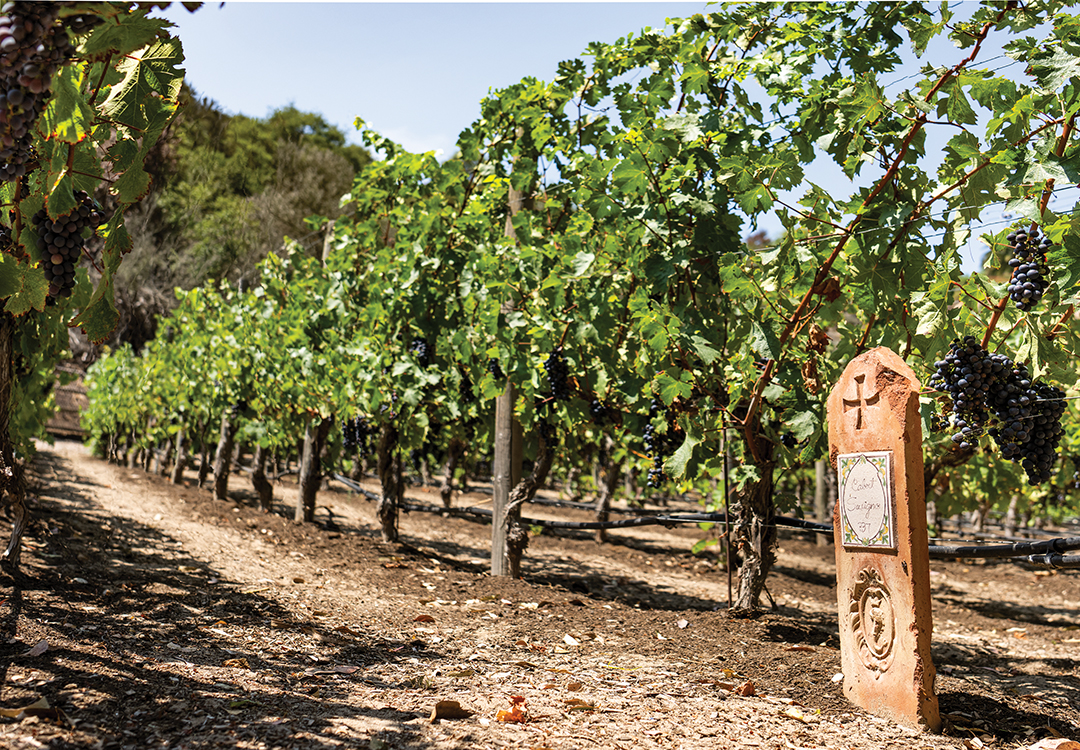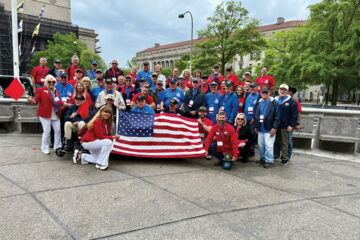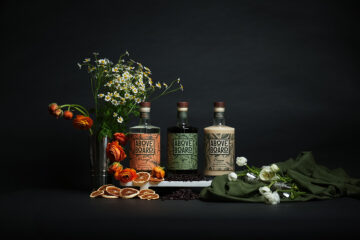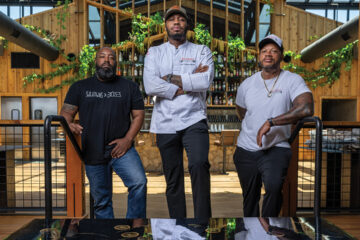Local grape growers are pushing for Rancho Santa Fe to be designated as its very own AVA
A collective of Ranch-based grape growers works to establish Rancho Santa Fe as a unique wine region

Napa, Sonoma, and Paso Robles are wildly popular California wine regions. Each is home to long-established American Viticultural Areas (AVAs), a federal designation granted based on a region’s distinct soil makeup, climate, elevation, and historical significance in terms of wine grape cultivation. While Temecula is the most well-known AVA to most locals, San Diego County is host to the Ramona Valley and San Pasqual AVAs as well. And if a growing cadre of local grape growers has its way, Rancho Santa Fe will soon be added to that list.
At the nucleus of this grassroots campaign is Ranch resident Jon Williams. He and his wife, Tammy, speculatively planted 1,000 Bordeaux clones (cabernet sauvignon, merlot, cabernet franc) on their property more than a decade ago. To their delight, several experts they consulted found the fruit to be exceptional enough that the Williamses went on to launch their own wine label, The Cov (short for Covenant), in 2015. Production is small — less than 175 cases annually — but The Cov’s wines have found themselves at home at local mainstay Mille Fleurs restaurant over the past five years.

“When Jon came to me with a bottle of his 2012 vintage and asked if I would be interested in carrying his wine, I thought it would be a good idea to offer local wines,” says Mille Fleurs proprietor Bertrand Hug. While the restaurateur didn’t expect customers to rush to order an RSF wine, he was impressed by The Cov’s initial offering and remembers his notes: “Deep garnet red with excellent viscosity, a nose of cassis and red fruit which continues on the palate. Some light eucalyptus and mint with plum and dark cherry. Very pleasurable.”

The Ranch’s inherent ability to nurture citrus and other edible agriculture is proven, but its suitability for wine grapes has only recently been unearthed. When asked what elements foster viticulture, Fallbrook Winery Head Winemaker Euan Parker (who also handles winemaking for The Cov) says, “There are multiple topsoil types and exposure to the sun and wind. The subsoil, sea breezes, heat summation, and degree days are fairly constant.”

Adds Williams, “The narrow valley in which our vineyard is located enjoys the most desirable input for optimal fruit development with periods of high light intensity and moderate temperatures, generally between 72 and 85 degrees, with limited hours of exposure to 85 to 90 degrees. The valley’s winter-chill hours encourage a deep, solid dormancy period which contributes to our even and intense bud-break and flower period.”
Williams is but one of more than 25 Rancho Santa Fe residents nurturing wine grapes on their residential properties, ranging from Bordeaux and Rhône varietals to those of Italian origin. Several of those vineyard owners have banded together to form the Rancho Santa Fe Vintners and Growers Association (RSFVGA), which is campaigning for AVA designation with the U.S. Alcohol and Tobacco Tax and Trade Bureau. A key member of this squad is David Gamboa, who, after visiting the Williamses’ vineyard, replaced a decade-old, 800-tree lemon grove on his property with 450 vines of cabernet sauvignon.
“We are quite confident the RSF region is truly unique,” says Gamboa. “A critical part of our forthcoming AVA application must make this case through an exhaustive and professional study of our region’s geography, soil, climate, and elevation. We will learn a lot more in the coming months, but for now we have discerned that urban development has eliminated viticulture potential between Rancho Santa Fe and the U.S.-Mexico border, and the AVAs closest to us have much hotter climates. As for terroir, a few of our grower members believe the eucalyptus trees planted here by the Santa Fe Pacific Railroad more than 100 years ago help formulate a unique flavor for the grapes that helps distinguish the area’s wines.”

Extending the examination of the region to a business perspective, Gamboa says the 25-plus Rancho Santa Fe vineyards his group knows of constitute more than $10 million in private capital investment and amass to more than 15,000 vines yielding more than 30 tons of 13 different varietals with an annual bottle production capacity exceeding 20,000 units.
While not yet at the bottling stage, RSF resident Jay Flatley is making progress toward that goal after planting a pair of cabernet sauvignon clones on his sun-facing hillside property. In doing so, he consulted with winemaker Sam Kaplan (Arkenstone Vineyards, Memento Mori, Nine Suns Winery, Maxem Wine) about proper varietals, vineyard layout, and growing methodology, and brought in experts from Barbour Vineyards to install the vines.

“My goal, first and foremost, is to create a great wine, and if sufficiently great, we will make our own label and market the wine,” says Flatley. “We will harvest in RSF, then ship the grapes in cooled trucks to Arkenstone, where Sam will make the wine. We will make our first batch this year, although it will take a few more years to grow into the potential of the vineyard.”
“We believe this region is truly up-and-coming wine country and are very excited to see the involvement of others with the same passion to continue to develop and grow this exciting new wine-growing region,” says Williams, who acknowledges that not everyone growing grapes in the Ranch is doing so in the spirit of entrepreneurialism. Many are locals who simply enjoy the romantic aesthetic of vines and the process of nurturing grapes to maturity. The RSFVGA has a plan for bringing them into the fold so their passion and product can further represent the region.

“Our group plans ultimately include a wine tasting room in the Village and a co-op with guest winemakers for those interested in owning a vineyard and farming the grapes without taking on the cost and effort involved in getting that fruit to the bottle,” says Williams.
Wines from the co-op may eventually be sold under an umbrella label, something that could help raise awareness for the region through its liquid assets. “To me, the future of grape growing and winemaking in RSF looks delicious,” says Gamboa. “As delicious as a 2025 cabernet sauvignon from Rancho Santa Fe.”
On Saturday, September 11, 2021, from 4-7pm, Cork & Knife’s Rancho Santa Fe location will be hosting a Back Alley BBQ featuring The Cov 92067 Bordeaux Style Red Blends from 2014, 2015, and 2017, along with a chef-inspired BBQ plate to accompany the variety of pours. Click here for complete event details.





Comments